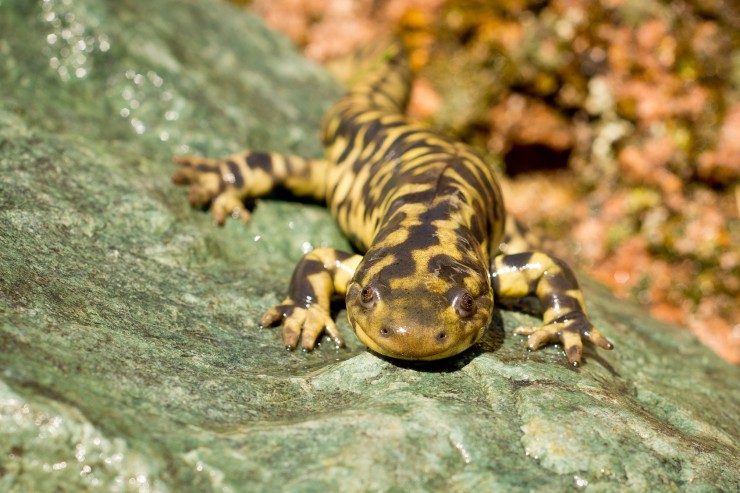

Due to the fact that amphibians like salamanders are very different to mammals such as common domestic pets like cats and dogs, their care requirements, the types of problems that they can face and the symptoms that they display when something is wrong are also very different!
Because most people would scoff at the idea of there being such a thing as an overweight lizard, it often comes as a surprise to salamander owners to learn that salamanders can become overweight, and even more so that a significant number of domestic caged salamanders actually are!
If you own a salamander or are considering getting one and want to make sure that you are as well informed as possible about the potential problems that such amphibians can face, this article will provide you with some important information on how to tell if your salamander is at the right weight, how obesity in such animals occurs, and what you can do about it. Read on to learn more.
If your pet salamander eats too much food and doesn’t get enough exercise, they are apt to become overweight, regardless of any other factors. However, it is generally the larger species that are most prone to obesity, including the tiger salamander, which are very likely to pile on excess weight with ease!
Regardless of size or species, salamanders tend to become less active as they get older, and so older salamanders may be at risk of getting a little plump too, and of course, any salamander whose tank is not really large enough or well-furnished enough to provide them with enough room and obstacles to exercise naturally is also more likely to get fat.
An ill or injured salamander that hasn’t lost their appetite will also be more likely to gain weight, and so it is important to keep an eye on your pet’s general health and wellness and learn to spot any potential problems quickly.
The usual culprits of weight issues in the salamander are the same as those for any other animal-too much food and not enough exercise! This means that you may be feeding your salamander more food than they really need, and as salamanders are opportunistic feeders that are not good at regulating their own diets, because in the wild they are used to eating when they get the chance in case they go hungry later, moderating your pet’s food intake is down to you.
How much your pet should be fed will depend on things like their species, age, size and activity levels, but rather than sticking strictly to a set formula of how much to feed, it is important to adapt your pet’s food intake to the level that is suitable for them.
Salamanders in the wild are naturally very mobile and active, often having to search quite hard for potential food, which means that they remain lean and healthy due to having to find their own meals! But within a domestic environment, your pet’s food is provided for them without them having to do any work to get it, and so it is important that your salamander’s tank is set up to provide plenty of opportunities to exercise, and encouragement for them to do so!
If you are not an expert in salamanders and have not seen enough of them to be able to judge their normal weights, it can be hard to tell if your own pet is getting a little plump.
Obviously, visible signs of being fat are the key indicator of weight issues, and you can check how much of your salamander’s body has an additional layer of fat by using gentle finger pressure to identify extra padding.
Looking up some images of the specific species of salamander that you own can help you to look at your own pet objectively, as the shape and build of the various different species can vary quite a lot. If your salamander is female and suddenly seems to be growing in the abdominal region, you must of course also take into account the possibility that she is carrying eggs, not fat! An overweight salamander will tend to have a uniformly fat appearance, with the extra bulk evenly distributed across the body.
Other indications that your salamander is uncomfortably overweight can include lethargy and reluctance to exercise much, and if your pet is very obese, the additional fat around the neck can actually lead to laboured or noisy breathing.
Obesity can lead to a wide range of health problems in the salamander, just as it can in any other animal, so it is important to get your pet back to a healthy weight as soon as possible.
You may need to consult with a specialist exotics vet to ensure that there is not an underlying health problem contributing to their weight gain, but if this is not the problem, feeding them less and encouraging them to exercise more is the key to keeping their weight within healthy norms.
A tank that is too small must be replaced as soon as possible with one that is more appropriate for the size of your pet, so that they have more room to move and stay fit. You should also try to make the tank furniture interesting to your pet, to encourage them to move around, climb, and generally, exercise properly, as well as reducing their food intake.
Copyright © 2005-2016 Pet Information All Rights Reserved
Contact us: www162date@outlook.com